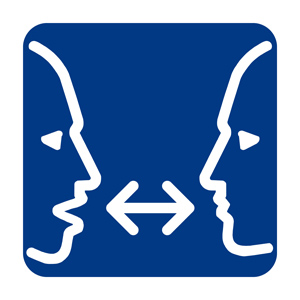Communication Access in Hospitals
Suggestions for People with Speech-Language Disabilities (SLDs)
Page Content
There are a few things you can do to make it easier to communicate with healthcare providers.
- Carry a communication access card (see Figure 1) to show to the receptionist or healthcare provider. You can ask them to make a copy and keep it in your file.
- Get vocabulary ready in your device or on a communication display if you have time to plan your hospital visit. Your speech-language pathologist (SLP) or alternative and augmentative communication (AAC) clinician can help you with this.
- Bring a communication assistant with you if you think you might need assistance. Think about who you want to have with you and when If needed, ask your healthcare provider to find someone to assist you.
 | - I understand everything you are saying and I make my own decisions.
- I use a letter board to spell out what I want to say.
|
Accessibility includes communication. Here are some things you can do so that we can communicate when I am using your services. Thank you | Here is how you can help:
- Make sure I have my letter board at all times when we are communicating.
- It’s OK to ask me Yes and No questions but also ask me if I want to compose my own messages on my board.
- Read my instructions on what to do when I use my communication board.
- Make sure I can reach and use the call bell before you leave my bedside.
|
Figure 1: Sample Communication Access Card
Credits: Adapted from Communication Disabilities Access Canada (CDAC)
Current as of: May 20, 2018
Author: Allied Health, Speech, Language, Hearing and Audiology, Alberta Health Services
